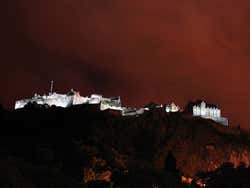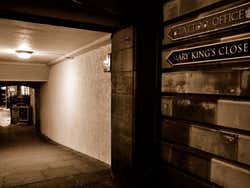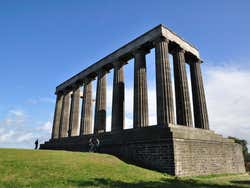
History of Edinburgh
The earliest human sites recorded in the Edinburgh area date back to 8500 BC and the first signs of habitation on the Castle Rock, Arthur’s Seat and its surroundings date to 900 BC approximately.
Middle Ages
During the Middle Ages, a small fort called Dun Eiden was built by the Gododdins probably on the Castle Rock, although the exact location is unknown. In the 7th century, the Angles (the tribe which gave its name to England) attacked the Gododdins and invaded the fort. The Angles took the name “Eiden” and joined it to “Burh”, an old English word meaning fort, thus creating the name of Edinburgh. The fort and the region were not re-captured by the Scots until 1018.
It's uncertain when the royal castle was built on the Castle Rock, but it's believed that it was constructed little before or during the 12th century, probably during the reign of David I. A settlement began to grow on the east side of the Rock at this time and Edinburgh and Canongate, considered royal burghs, were allowed to conduct foreign trade.
During the Medieval period, the concept of a friar was founded. Friars, unlike monks, worked for a community and could leave the monastery. In Edinburgh there were Dominican friars, dressed in black, and the Augustinian friars, dressed in grey. Both lived in the southern part of Edinburgh.
During the 14th century, commerce began to grow and Edinburgh became known for its wool, exported from Port Leith along with leather goods. The cattle were sold in Cowgate and the cereal and hay were both sold at the Grassmarket.
Despite constant battles against the English (the Castle was captured between 1296 and 1322 and in 1385 the Cathedral and the Town Hall were burnt down), Edinburgh developed as a prosperous city. During the 15th century, Edinburgh was made the royal capital of Scotland and the Palace of Holyrood was built between 1671 and 1678 for Charles II.
16th and 17th Centuries - Gloomy and Overpopulated Edinburgh
Around the year 1500 approximately 12,000 people lived in Edinburgh. The population grew rapidly and reached 15,000 less than half a century later.
After the Battle of Flodden in 1513, the inhabitants of the city built the Flodden Wall around Edinburgh to protect it from the English. However, the wall was not very effective, and the English would breach it to attack the city on several occasions.
Since Edinburgh was surrounded by the wall, its continually growing population steadily built multi-story houses. The first stone high rise buildings were constructed in The Royal Mile and were sometimes up to 12 stories high. When these “lands” (residential houses in Scots) were not enough, the citizens built wooden houses on top of the stone houses.
Edinburgh became a filthy city continually hit by plagues, illnesses and fires. By the end of the 17th century, the city had a population of 50,000 people.
The 18th Century – The New Town
In the 17th century, Daniel Defoe, English author of the novel Robinson Crusoe, remarked about Edinburgh “that in no city in the world [do] so many people live in so little room as Edinburgh”.
The bubonic plague, typhus and cholera were present in the everyday lives of Edinburgh’s population. These would shout “Gardyloo” when they would throw wastewater from their windows into the street to warn passers-by. The citizens would fling their household waste into the Nor Loch (today Princes Street Gardens), and many historians believe that it was also used for drinking water. Edinburgh was one of the most unsanitary towns in Europe.
In 1752 the expansion of Edinburgh was proposed, but it wasn't until 1767 that the plans of the New Town were designed by James Craig, a young unknown architect who won the competition to design the new part of the city. The architect presented a plan of large parallel streets, squares and gardens. By this period, Edinburgh no longer needed to be circled by its defensive wall since Scotland was united with England in 1707, having been presided over by the same monarch for over a century—however the long years of antagonism and separate history explain the existence of separate institutions such as the Bank of Scotland and the Scottish Parliament in Holyrood (as well as the current Scottish independence movement).
By the mid-18th century Edinburgh became a popular place for intellectuals, especially with regards to philosophy, history, medicine, science and economics. Between 1768 and 1771 for example, the Encyclopaedia Britannica was published in Edinburgh.
19th and 20th Centuries
During the 19th century Glasgow became an important industrial town to the detriment of Edinburgh. The most important industries of the city were the production of beer and the printing industry. Bankers and lawyers also settled in Glasgow.
The New Town was finished at the beginning of the 19th century and attracted Irish immigration, increasing the population to 170,000 in 1850.
Calton Hill, the Scottish National Gallery, the Scott Monument and other buildings of interest were constructed during this period.
During the 20th century more museums, department stores and other top attractions for tourists were constructed. This sector grew rapidly and by the end of the 20th century it had become a popular tourist destination.
On 1 July 1999 the Scottish Parliament was officially opened by the Queen, and it reconvened after 292 years. The Scots would be able to make their own laws regarding health, education and social care. The new building was inaugurated in 2004.


